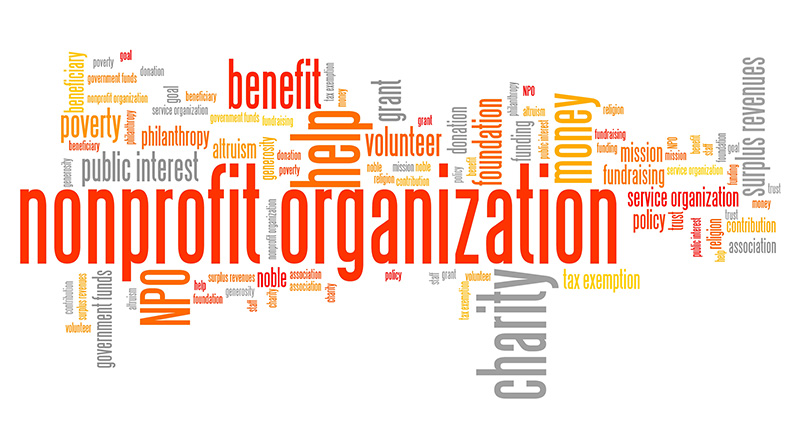Leading Nonprofit Company: Offering Strategic Assistance for Mission-Driven Teams
Leading Nonprofit Company: Offering Strategic Assistance for Mission-Driven Teams
Blog Article
The Significance of Cooperation and Collaboration for a Nonprofit Company in Maximizing Resources and Enhancing Area Involvement
In the realm of nonprofit companies, cooperation and partnership emerge as important systems for promoting and amplifying sources community engagement. By tactically involving with other organizations, nonprofits can leverage shared proficiency and monetary assistance, thus addressing facility social difficulties a lot more expertly. Moreover, these partnerships not just enhance program efficiency however also cultivate a deeper feeling of community involvement and possession. Yet, the true potential of these joint efforts commonly remains untapped, elevating inquiries about how ideal to navigate collaborations for optimal influence and continual success. What variables add to the efficiency of these collaborations?
Benefits of Collaboration
/cloudfront-us-east-1.images.arcpublishing.com/pmn/6GXUXHF3ZNC3NEJIVB7WWUIHFM.jpg)
Furthermore, partnership promotes innovation by encouraging the exchange of ideas and best practices. When organizations interact, they can discover varied perspectives, leading to innovative options that might not arise in seclusion. This common analytic approach can inevitably boost service delivery and program outcomes.
In addition, collaborative initiatives can improve community interaction. When nonprofits partner with one another, they can mobilize wider assistance from stakeholders, including volunteers, donors, and area participants. This collective interaction not just increases exposure yet additionally strengthens the integrity of the taking part companies.
Structure Strategic Collaborations
Cooperation amongst nonprofit firms typically brings about the formation of tactical collaborations, which are crucial for making the most of influence and accomplishing shared goals. These collaborations enable companies to take advantage of each other's strengths, boosting solution distribution and broadening outreach. By aligning objectives and objectives, nonprofits can develop a collaborating result that amplifies their reach and effectiveness within the neighborhood.
Structure tactical collaborations calls for cautious planning and shared understanding. Developing open lines of interaction promotes depend on, allowing companions to review resources, responsibilities, and assumptions transparently.
In addition, clearly specified roles and responsibilities are crucial for liability and success. Formalizing the partnership via created agreements can offer a framework for partnership, describing the scope of job, performance metrics, and evaluation approaches. By fostering these calculated alliances, nonprofit companies can boost their capacity to attend to neighborhood needs, innovate solutions, and mobilize sources efficiently, eventually resulting in a much more considerable and sustainable effect in the neighborhoods they serve.
Sharing Resources Effectively
Exactly how can not-for-profit agencies optimize their influence with effective resource sharing? By strategically collaborating with various other organizations, nonprofits can improve their operational effectiveness and expand their reach within the community. Source sharing includes pooling various assets, including funds, personnel, expertise, and centers, to address common objectives much more properly.

In addition, leveraging each other's toughness can foster innovation. By exchanging expertise and best methods, firms can improve service delivery and develop brand-new options to neighborhood difficulties. Effective source sharing also cultivates a sense of unity, strengthening the idea that collaboration is crucial for achieving substantial social influence.
Engaging the Neighborhood
What techniques can nonprofit companies use to properly engage their communities? Most importantly, establishing open lines of interaction is critical. Using different platforms, such as social media, newsletters, and area forums, allows companies to distribute information, solicit comments, and foster dialogue. This two-way interaction not just notifies the neighborhood about the agency's mission and tasks yet likewise welcomes input, making community participants feel valued and included.
Furthermore, developing partnerships with regional organizations can enhance outreach efforts. nonprofit agency. Collaborating with colleges, organizations, and various other nonprofits can enhance resources and create a much more extensive support network, permitting joint initiatives that resonate with community demands
In addition, organizing community events, workshops, and volunteer opportunities can facilitate deeper interaction. These tasks develop a sense of belonging and motivate active engagement, allowing individuals to add to the agency's objectives while developing partnerships this article with fellow neighborhood participants.
Gauging Joint Success
Evaluating the efficiency of collective efforts is essential for not-for-profit agencies have a peek at this site looking for to maximize their impact. Gauging joint success entails establishing clear, quantifiable objectives and making use of a selection of metrics to evaluate efficiency. Key indications may include the number of partnerships developed, resources shared, and the tangible results achieved with partnership.
To successfully measure success, nonprofits ought to carry out a structure that incorporates both qualitative and measurable information. Surveys and interviews can supply understandings into stakeholder satisfaction and the viewed worth of collaborations. Additionally, tracking metrics such as solution reach, area involvement degrees, and financial performance can provide a comprehensive sight of joint efficiency.
Routine analyses should be conducted to determine areas of enhancement and finest practices. This iterative process not only improves accountability however likewise promotes a culture of continuous knowing within the organization - nonprofit agency. By transparently sharing assessment results with stakeholders and companions, nonprofits can strengthen connections and develop trust
Ultimately, gauging joint success allows not-for-profit companies to improve their methods, designate resources more efficiently, and boost their mission-driven initiatives, causing a greater cumulative influence on the communities they offer.
Verdict

In the world of nonprofit agencies, cooperation and collaboration arise as vital mechanisms for promoting and magnifying sources neighborhood engagement - nonprofit agency. By fostering these strategic partnerships, nonprofit agencies can enhance their capability to attend to neighborhood requirements, innovate remedies, and mobilize sources efficiently, eventually leading to an extra considerable and sustainable effect in the neighborhoods they offer
By purposefully collaborating with other organizations, nonprofits can enhance their functional efficiency and prolong their reach within the neighborhood.What strategies can not-for-profit firms use to properly involve their communities?Collaboration and partnership stand as essential pillars for not-for-profit firms aiming to take full advantage of sources and boost community interaction.
Report this page